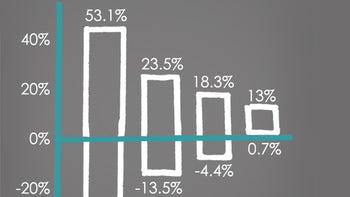Long Haul Investing
Published September 03, 2013
Long Haul Investing
Investing for the long haul is a passive investment strategy: investors buy stocks and hold them for a long period, regardless of short-term market fluctuations. You may miss out on extreme gains by investing for the long haul, but you’ll also miss extreme losses, which will give you invaluable security and peace of mind. In fact, a 20-year holding period has never delivered a loss on stocks throughout history.
Bad Markets
The typical investor is tempted to get out of a bad market by selling when prices are low, which is a poor strategy. The economy fluctuates between good and bad all the time, and those who constantly buy and sell will be hit the hardest in a bad economy. When you invest for the long haul, especially when you’re just starting out, you shouldn’t need to liquidate within the next few years. By holding on to your investments, you’ll be better able to ride out a down market, especially if your portfolio is diversified. Short-term fluctuations don’t matter as long as your investments do well in the long run, so you should be more concerned with the quality of your investments than the current value or past performance.
Cultivating Your Portfolio
The term “buy and hold” doesn’t mean investing and forgetting about it for the next 20 years. There are ways to cultivate and prune your portfolio while still maintaining your long-haul investing strategy. For instance, if a company you invest in changes fundamentally, you may not want to continue investing in them. If the market changes dramatically, as it has in the past, you may actually benefit from selling. Finally, your changing goals as you get closer to retirement may warrant a more conservative portfolio. Having a plan for cultivating your portfolio protects you from reacting emotionally to short-term market fluctuations.
Short-Term Investing
If you decide to try short-term investing, make sure the amount you invest is the amount you’re willing to lose. Short-term investments see the most volatility, which makes this strategy too risky for the majority of investors. For dedicated professionals, this strategy is risky; for everyone else, it’s nearly impossible to make a profit. Often the majority of a year’s gains are seen in a short period of a few days, so those who practice short-term investing may miss out on those gains, where long-term investors are sure to be invested in the market at that time. To safely make money in the stock market, long-haul investing is the way to go.
Taxes And Fees
Frequent trading results in higher fees, so long haul investors pay less while fees eat up much of a day trader’s profits. Additionally, short-term gains are taxed at a higher rate than long-term gains. Even if you have the fortune of timing the market successfully, your profits will be diminished by taxes and fees.
Investing for the long haul is the best investing strategy for the majority of investors because it not only ensures modest gains but is also less likely to yield major losses. A long-haul investment strategy is based on informed, careful decision making and patience that is nearly guaranteed to help you reach your investing goals.
